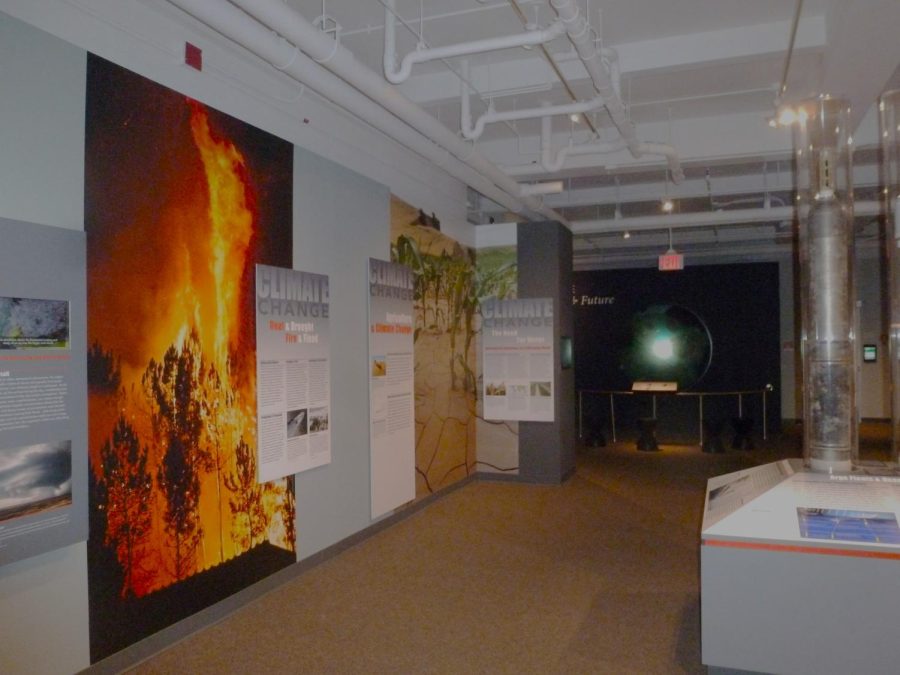The Harvard Museum of Natural History recently revamped its climate change exhibition. The new rendition of the exhibit builds upon the original but now includes more interactive displays, videos and even more information about climate change across the globe.
The museum welcomed the climate change segment to its roster of exhibits in 2019. This exhibit expanded upon the climate crisis and exactly how it affects our weather and ecosystems, bringing the information gained by those at Harvard and across the globe to a wide range of people.
“Here at Harvard, we have many researchers who contribute to understanding climate change and working towards solutions. This exhibit is a manifestation of that knowledge, and through our partnership with HMNH, we are able to present some of that to the broader community,” said lead curator, Professor Dan Schrag, Director of the Harvard Center for the Environment, in a press release upon the original opening of the exhibit.
When first built, the exhibit included climate monitoring tools from the Woods Hole Oceanographic Institute, damaged pieces of coral reef and several other interactive displays. The exhibit also included a sphere screen that displayed global and universal scientific discoveries, like the snow earth and El Nino. This sphere screen showed accurate scientific data and renderings of these events and places.
All of these informative pieces on climate change remained in the exhibition, with revisions being made to reflect the latest information on the climate crisis and include more interactive opportunities for those visiting to enhance their understanding of these topics.
The museum now includes touch screens placed around the original exhibit. These touch screens work in tandem with the original displays to enhance the viewer’s experience with more information and visuals. Harvard professionals like Jerry X. Mitrovica in the Department of Earth and Planetary Sciences and Paul Moorcraft in the Department of Organismic and Evolutionary Biology use their expertise to best explain certain phenomena involved in the science of climate change.
Moorecraft’s segment, entitled “Climate Change and the Amazon Rainforest” went into depth about the unique ecosystem of the rainforest and how it has been specifically impacted. Mitrovica is focused on how sea levels are an indicator of climate change.
Another new aspect of the exhibit was renderings of supercell thunderstorm footage available to be played via a touch screen. These renderings went into depth on the formation of cyclone storms and how climate change affects the formation of these storms.
There was also a component of the exhibit with seating and a projector. The projector displayed headlines and statistics on the polar ice caps melting and how this has affected coastlines across the globe.
Other portions of the exhibit focused on human impact. A video segment from Jennifer Leaning, a Professional of the Practice at Harvard T.H. Chan School of Public Health and Harvard Medical School, discussed how humanitarian efforts impact the trajectory of climate change.
This portion of the exhibit included displays dedicated to the solutions that can be administered to potentially slow and prevent climate change, highlighting preventative measures being taken across the globe. This display included some of the newer technology being developed, like power storage facilities for renewable energy sources.
The new rendition of the exhibition expands upon the previous ideas, including more new information for visitors to further their knowledge of the impact of climate change. This exhibit is currently a permanent part of the museum and is worth a visit for anyone curious about our climate and planet.








